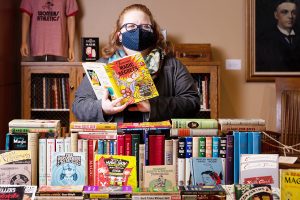
Nearly 150 years after it leveled 18,000 buildings and killed 300 people, the Great Chicago Fire (October 8–10, 1871) lives on—in the city’s tourist attractions, sports team names, and soon in a Chicago History Museum exhibit commemorating its anniversary this fall.
“It’s just amazing how much the aftermath was documented,” says Ellen Keith, director of the museum library. The library’s holdings include period maps and stereographs (an early form of three-dimensional photographs popular in the 19th century) depicting the burned areas of the city, transcripts of the 1871 fire department hearings, a 1997 mayoral resolution exonerating Mrs. O’Leary and her cow of blame for setting the blaze, and even sheet music for songs about the fire.
But it’s the hundreds of personal narratives that are most powerful, says Keith. “What makes [these accounts] both interesting and special is that they’re everyday people.”
Materials related to the fire represent only a fraction of the collection’s 23,000 linear feet; on any given day, Keith and her staff field requests from students, historians, media, documentary filmmakers, authors, and Chicago enthusiasts on a slew of subjects. “World’s Columbian Exposition popularity will never diminish,” she says, nor will queries on house history—a tricky topic, considering Chicago streets were renumbered in 1909 and renamed continuously.
As for Keith’s favorite item? The library’s Sanborn fire insurance maps, hefty volumes that outlined city structures and color-coded building materials to assess risk. “They’re sort of a snapshot of how a neighborhood would change over time. They were expensive to reprint, so when they updated one, they would paste over [the old maps],” says Keith, “which I really find archaeological.”


